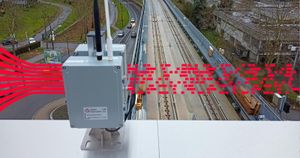Delhi is gearing up for its assembly elections with more than 1.5 crore eligible voters expected to cast their votes on February 5, 2025, across 70 constituencies. This election has generated significant interest as the ruling Aam Aadmi Party (AAP) contends for its third consecutive term amid stiff competition from the Bharatiya Janata Party (BJP) and Congress.
The election will see 699 candidates vying for 70 seats, marking the culmination of 14 days of intense campaigning. Polling began at 7 am and will continue until 6 pm with extensive measures put in place by the Delhi Chief Electoral Officer to facilitate smooth voting procedures.
One of the unique features of this election phase is the heightened focus on exit polls. Leading polling agencies such as Axis My India, Today's Chanakya, C-Voter, and P-Marq are preparing to release their predictions shortly after voting concludes, providing insights on voter sentiments and expected political outcomes. Historically, each election period has come with its own predictions about the performance of the parties, and the reliance on exit polls has only grown.
Understanding how exit polls work is fundamental to assessing their results. Exit polls are conducted immediately after voters leave polling stations to gain real-time insights about the electoral outcome. Unlike opinion polls, which can be less reliable due to bias and uncommitted voters, exit polls invite voters to disclose their choices as they physically exit the polling booths. This practice is predicated on the belief voters are more candid immediately after casting their ballots.
Despite their expanded usage, exit polls have often been criticized for their accuracy. According to the Representation of the People Act of 1951, regulations prohibit publishing results of exit polls until voting has concluded across the electoral jurisdiction to avoid swaying those who have yet to cast their votes. The Election Commission mandates strict compliance with these guidelines to uphold the integrity of the electoral process.
Looking back at previous assembly elections, exit polls have had both their triumphs and failures. For example, during 2013 assembly elections, exit polls varied widely, predicting the BJP would secure 35 seats. Yet, the company, Today's Chanakya, came the closest to the final outcome, estimating AAP at 31 seats and BJP at 29, differing from the actual results of BJP winning 32 seats and AAP securing 28. The 2015 elections saw polls predict significant victories for AAP, averaging estimates of 45 seats, but failing to foresee the 67 seats AAP clinched.
Fast forward to 2020, exit polls solidified their predictive accuracy, but again expressed caution. The India Today-Axis My India poll suggested AAP could win anywhere between 59 to 68 seats, which aligned closely with AAP's eventual seat count of 62. While the BJP received only 8 seats according to polls, this again outpaced Congress, which struggled to secure any.
What lies ahead for the 2025 elections is particularly gripping as AAP campaigns on its record of providing welfare schemes such as free water and power to households, financial support for women, and enhanced educational services. The BJP, eager to reverse its decades-long absence from the Delhi assembly, is pledging similar support measures, hoping to woo voters back to its fold. Meanwhile, Congress is also trying to reclaim its share of the electorate after nearly ten years out of power.
Parties have poured their energies behind door-to-door campaigns, emphasizing their pledges to the electorate. An example includes AAP's promise to save families around Rs 25,000 each month through its welfare schemes, alongside the BJP's introduction of stipends for women and pension increases.
The excitement continues to build as polls near closing time, with the results expected to be released at 6:30 pm following the 6 pm closure of polling stations. These forthcoming predictions will not only shape expectations but may also influence the final voter turnout as citizens watch anxiously for insights from these early indicators. The final outcome, announcing the political leadership of Delhi, will officially be revealed on February 8.
This year's exit polls, encompassing the mood of the voters within the national capital, are set to be closely watched. Past results have shown discrepancies between projections and actual outcomes, reminding everyone of the unpredictable nature of politics. For analysts and voters alike, the significance of these exit polls is undeniably high.
With the mix of excitement and uncertainty, this election promises to engage and perhaps surprise the political pundits observing the battle for power within the nation's capital.



